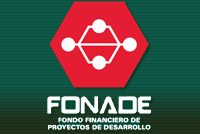| Fondo Financiero de Proyectos de Desarrollo | |
 | |
| Agency overview | |
|---|---|
| Formed | 16 December 1968 |
| Jurisdiction | Central government of Colombia |
| Headquarters | Calle 26 № 13-19 Bogotá, D.C., Colombia |
| Agency executive |
|
| Parent agency | National Planning Department |
| Key documents | |
The National Fund for Development Projects (FONADE) is a government financial institution of Colombia that provides grants and lines of credit to support feasibility and pre-feasibility studies of development projects in the public sector, especially those entities undergoing privatization. [1]